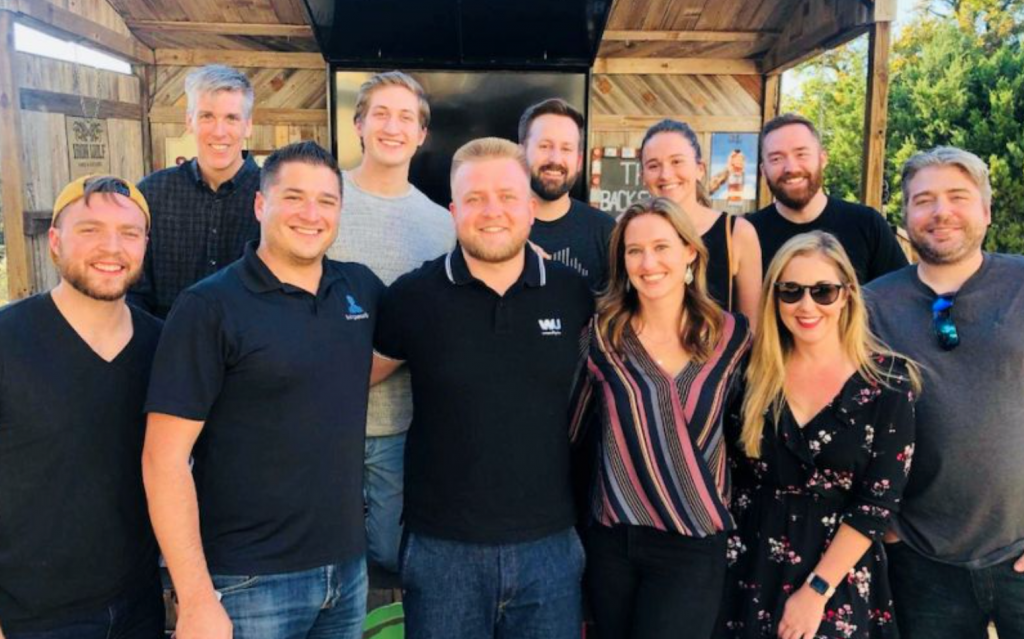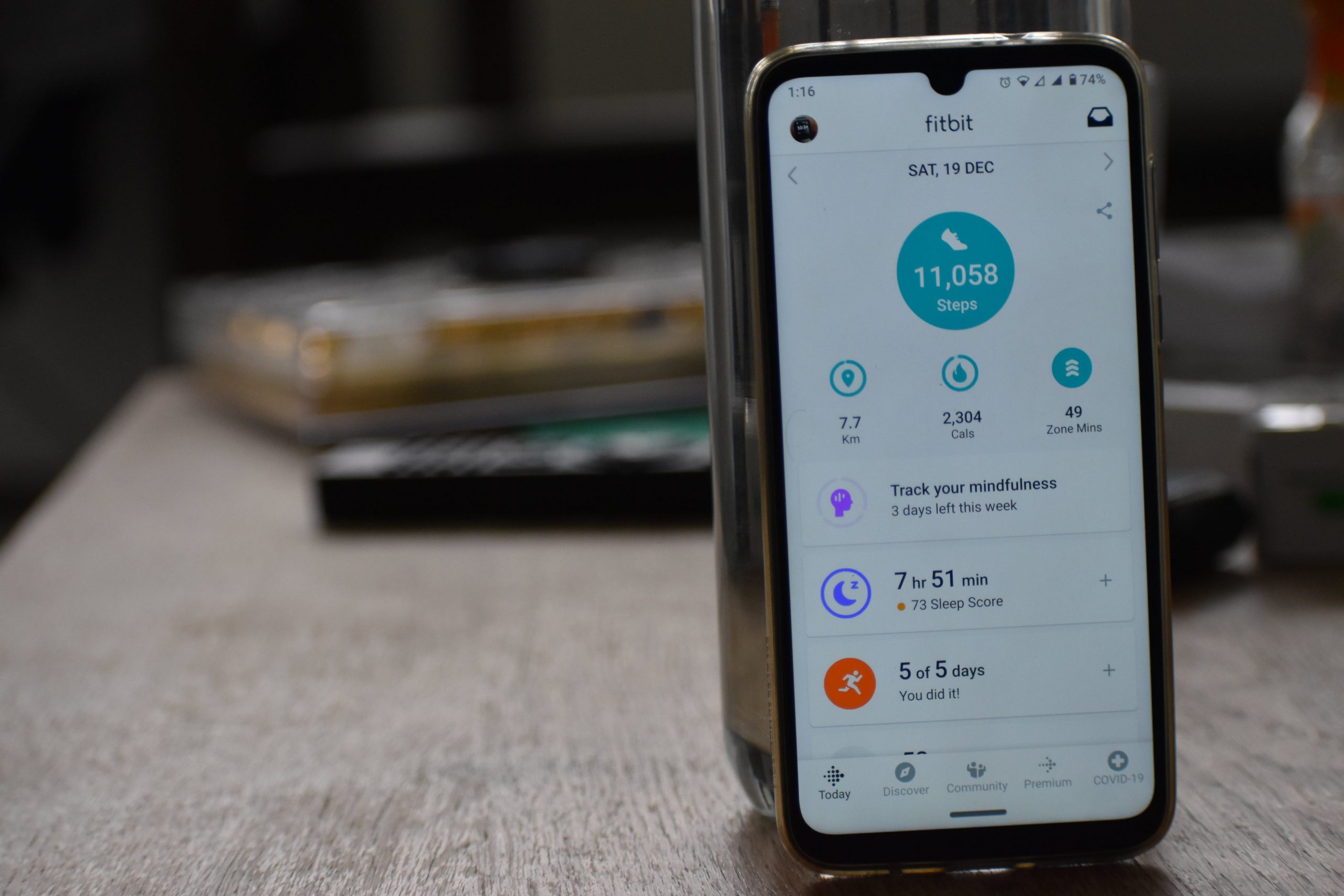AI is everywhere and the market is racing toward $500B. But here’s the catch: 42% of startups fail because they build something nobody wants. An MVP (Minimum Viable Product) is your insurance policy against becoming another statistic. It’s about building smarter, testing assumptions, proving value, and showing investors you’re solving a real problem.
In this AI MVP development guide, we’ll walk you through what it really is (and isn’t), how to design one that resonates with users, the cost factors to expect, and the traps most founders fall into. Along the way, we’ll share lessons from WeSoftYou’s experience helping startups turn early AI ideas into products that actually win funding and traction.
What Is MVP in AI?
Launching an AI product isn’t like shipping a standard app. Instead of designing screens, you deal with data pipelines, training cycles, and unpredictable model behavior. An AI MVP (Minimum Viable Product) exists to cut through this complexity. It’s not about building “less”; it’s about building the right thing first.
Defining an AI MVP in Practice
An AI MVP is the smallest version of your product that demonstrates real-world value powered by AI. Unlike a simple prototype, which might only show a workflow or interface, an AI MVP proves your model can deliver consistent, useful results with real (or representative) data.
Example: Instead of building a full AI-powered hiring platform, your MVP might just be a resume parser that classifies candidates into “qualified” or “unqualified” buckets. That’s enough to validate whether your algorithm solves a tangible pain point before expanding into scheduling, integrations, and dashboards.
This approach is cost-effective, especially when we’re talking about startups. Moreover, it also prevents the #1 startup killer in AI: building sophisticated models around problems no one actually needs solved.
Why AI MVPs are Critical for Startups
Here’s why going the MVP route is non-negotiable in AI:
- AI failure rates are brutal. 88% of AI projects fail, most because of poor data or misaligned assumptions. An MVP helps you surface these risks before they sink the company.
- Data > features. Startups using MVPs to stress-test data quality are 3x more likely to succeed, because they catch gaps in volume, privacy, and bias early.
- Investor traction. A working AI MVP isn’t a pitch deck; it’s proof. Startups with MVPs see 67% higher success in raising Series A funding because they show actual market validation.
- Faster iteration. AI MVPs launch 2–3x faster than full-scale builds, which means you’re learning from real users while competitors are still stuck in development.
Our experience at WeSoftYou shows that teams committing to an AI MVP upfront save 40% on overall development costs and reach product-market fit months earlier than those who try to “go big” immediately.
Our Case in Point: Building an AI MVP for Reading Platform That Helps Children with Dyslexia
When LUCA’s founder came to us, the vision wasn’t “just another edtech app.” It was deeply personal. Inspired by his son’s challenges with dyslexia, he wanted to create a tool that could transform reading for millions of children. But as with any AI-driven product, the risk was high: Would the technology actually work for diverse reading needs? Could the product be delivered fast enough to make an impact?
Our team treated the engagement as Proof of Concept that had to prove traction quickly and win investor confidence. In just 2.5 months, our team of six developers, designers, and data scientists turned the founder’s vision into a working AI MVP.
https://youtu.be/iUJOD1BJOa0?list=PLebZsnCCui8-lTh_QFjd5DY1iIGRTtPFA
The challenge:
- Addressing a wide range of reading difficulties, from early learners to severe dyslexia cases.
- Integrating AI that could adapt to each child’s reading pace while ensuring accessibility for parents and educators.
- Building an experience that felt empowering rather than clinical — motivating kids while keeping reporting and management robust for adults.
Our approach:
- Designed a modular MVP focused on core functionality: secure onboarding, personalized assignments, and progress reporting.
- Integrated advanced AI algorithms to deliver adaptive lesson flows and predictive insights.
- Built with a modern, scalable stack (Python, Django, React, TypeScript) so future iterations wouldn’t require costly rebuilds.
- Kept UX at the center — with dedicated navigation modes for parents, children, and administrators.
The result:
- A live platform noticed by PR outlets, Post-Gazette, and Toolify, validating both market demand and investor interest.
- Feedback from early users and investors confirmed the platform exceeded expectations.
- The founder himself called WeSoftYou’s contribution “the team that turned my dream into reality.”
Ready to validate your AI idea without overspending? Book a free consultation and let’s map out your AI MVP journey.
Full Build vs. AI MVP: Compare Two Approaches
Going all-in on a full build might feel bold, but for AI startups it’s often a costly trap. Spending 12–18 months and hundreds of thousands of dollars before testing the market can burn your runway fast. The MVP approach flips this script, as it gets your core AI model in front of users within weeks, helping you validate assumptions early, attract investors, and pivot with minimal risk.
Let’s break down the difference between a full build and an AI MVP.
| Full Build Approach | AI MVP Approach |
| 12–18 months before first user feedback → long “silent” development cycle with no market signal. | 2–3 months to launch a working model → rapid validation of assumptions with real data. |
| $500K–$1M+ in upfront costs covering full infrastructure, advanced features, and scaling before proving value. | $50K–$150K upfront → leaner investment, focused only on testing the riskiest assumptions. |
| Builds the entire product suite (UI, integrations, dashboards, automation) before confirming demand. | Strips to the essentials: proves the core AI model works and solves a real problem. |
| High risk of feature bloat — 55% of AI MVPs fail due to teams trying to “do it all” too soon. | Prioritizes the single use case that delivers value and generates traction. |
| Misaligned assumptions often surface late — data quality, model accuracy, or compliance gaps discovered after major spend. | Risks tested early: data availability, bias, regulatory compliance validated before scaling. |
| Burn rate accelerates without customer adoption, making it harder to raise follow-on rounds. | Creates early traction and proof points — 67% higher chance of Series A funding success. |
| Focuses on building tech; market risk remains untested until launch. | Focuses on testing the market → validates demand, user adoption, and willingness to pay. |
| Product-market fit delayed — many pivots happen only after significant losses. | Enables faster pivots (3–6 months) with less sunk cost and more agility. |
| Long-term: can waste years building the wrong product. | Long-term: iterates towards scalable product-market fit with continuous learning. |
How to Create AI MVP and Avoid Costly Mistakes: Preliminary Steps
Too many AI startups burn months (and millions) building solutions that no one needs. The early steps before writing a single line of code often determine whether your MVP becomes a fast track to funding or a costly dead end.
At WeSoftYou, we’ve helped startups avoid the traps by grounding their AI MVPs in real user pain, data validation, and lean delivery. Our experience shows that the right preparation cuts costs and accelerates time-to-market, often by 40% compared to traditional builds.
Here’s how to sidestep the most common pitfalls and start strong.
Identify The Problem
- What often goes wrong: Founders fall in love with AI itself (“let’s use GPT for something”) instead of solving a burning pain. That leads to clever tech with no demand.
- Smarter move: Anchor your MVP on one hyper-specific problem. Data shows 62% of successful AI MVPs target narrow use cases, while broad, unfocused ideas fail 3x faster.
Validate The Market, Don’t Assume It
- What often goes wrong: Skipping validation and betting on assumptions. Founders build months of features only to hear “this isn’t what we need.”
Smarter move: Test demand before development. Run quick interviews, map competitor blind spots, and use early landing pages or no-code tests. This de-risks your MVP and helps you prove traction before you write a single line of code.
Set Measurable Goals From The Very Beginning
- What often goes wrong: Building for the sake of building. Without clear metrics, it’s impossible to know if your MVP is working.
- Smarter move: Define success early. Is your goal to show traction for investors? Gather real-world data? Prove a technical assumption? Clear KPIs let you cut wasted cycles, ship faster, and come to the next funding conversation with hard evidence instead of vague promises.
Audit Your Data Before You Build
- What often goes wrong: Teams assume the right data will “just be there.” Then mid-project they discover it’s incomplete, biased, or unusable. Costs spiral as they scramble for cleanup or new sources.
- Smarter move: Start with a data audit. Ask: Do we have enough? Is it clean? Are we compliant with privacy rules (GDPR, HIPAA)? Addressing this upfront prevents rework, saves up to 20% of budget, and ensures your MVP produces credible results from day one.
Scope Ruthlessly To Avoid Feature Bloat
- What often goes wrong: Founders try to impress investors by cramming every idea into the MVP. The result? Delays, wasted spend, and a product nobody can test quickly. A lot of AI MVPs fail because of feature overload.
- Smarter move: Ruthlessly prioritize. Strip your MVP down to one or two core features that prove the value of your AI. Add more only after you’ve validated traction. Investors prefer seeing a sharp, tested insight over a bloated, unfinished product.
Budget Realistically
- What often goes wrong: Startups assume “we’ll build cheap, then scale later.” But surprise cloud compute bills, compliance audits, or integration costs quickly blow up early budgets.
- Smarter move: Plan your financial runway with real numbers: $10K–$30K for pre-built AI, $50K+ for custom, and $200K+ for enterprise-grade platforms. Include 15–20% buffer for unexpected costs. Honest budgeting builds investor confidence and prevents mid-project stalls.
Best MVP Tools for AI Product Development
When building an AI MVP, your choice of tools can either accelerate validation or trap you in costly, overbuilt infrastructure. Below are the categories of tools we can recommend, with notes on where they shine in a real MVP journey.
No-code and low-code builders for fast validation
Tools: Bubble, Retool, Glide
These platforms let you stand up functional prototypes in days without writing production-level code. They’re ideal for testing user flows, collecting early feedback, and pitching to investors before committing to heavy backend builds.
AI/ML platforms for model experimentation
Tools: TensorFlow, PyTorch, Hugging Face
These are the backbone of any AI MVP. Use them to fine-tune existing models, experiment with architectures, or deploy pre-trained solutions quickly. For lean MVPs, Hugging Face offers plug-and-play NLP and vision models that save weeks of custom training.
Data handling and annotation tools
Tools: Labelbox, SuperAnnotate, Scale AI
Data quality makes or breaks AI MVPs. These platforms streamline annotation, dataset curation, and pipeline integration. Investing here early prevents the 70% of AI MVP failures caused by poor or insufficient training data.
Rapid prototyping and design tools
Tools: Figma, InVision, Miro
Before coding, validate the user journey. Design tools make it easy to create clickable prototypes and test them with real users. This reduces rework during development and ensures the MVP solves actual pain points instead of assumptions.
Testing, deployment, and monitoring
Tools: Docker, Kubernetes, MLflow, Weights & Biases
Even an MVP needs reliable deployment. Containerization tools like Docker/Kubernetes let you scale when traffic spikes. Experiment tracking with MLflow or Weights & Biases ensures your AI models stay reproducible and measurable during iteration.
How We Approach AI MVP Design for Startups
When founders come to us, it’s rarely just about “building fast.” The real challenge is making the right early calls that prevent costly rebuilds later.
We’ve seen startups burn half their seed round on flashy prototypes, only to pivot six months later. Our role is to cut through that risk. At WeSoftYou, we guide clients through decisions that shape both immediate traction and long-term scalability.
Choosing Technology That Fits The Business
In our experience, most failed AI MVPs start with the wrong stack. It’s because teams get excited about the latest model but forget the end user.
At WeSoftYou, we reverse the process: we align the AI stack with business needs, not hype. For some clients, we used lightweight pretrained models to validate traction quickly. For others, like in healthcare or finance, we built scalable architectures from day one to meet compliance needs. This way, founders avoid both underbuilding and overengineering.
Designing for Trust and Adoption
AI products succeed only if users trust them. We’ve seen startups launch technically brilliant models that nobody used because the interface was confusing or the AI felt like a “black box.”
That’s why we put equal weight on UX. We design transparent interactions, simple explanations for AI outputs, and workflows that integrate naturally with how users already work. This ensures adoption from early testers and credibility when pitching to investors.
One of our fintech clients had a risk scoring model that worked technically but confused loan officers. We redesigned the UI to explain why the AI gave each score and adoption jumped by 70% in pilot tests. Building transparency into the interface was the turning point.
Prioritizing for Traction
One of the biggest mistakes we see: founders trying to ship a “mini full product” instead of testing the one riskiest assumption. Our team helps cut through the noise by defining the smallest feature set that proves real-world value.
For example, we’ve launched PoCs in 6–8 weeks that solved a single bottleneck but generated enough traction to secure follow-on funding. This approach saves 40–50% of upfront costs compared to building too broad.
Building with Scalability in Mind
A common pitfall: MVPs that can’t scale. We’ve rescued projects where the prototype worked in demo but collapsed when handling real data volume. Our approach bakes in scalability: modular architectures, clean APIs, and cloud-native infrastructure. That means you don’t have to rebuild from scratch when you hit growth.
Data Readiness as a First-Class Priority
Since most AI projects stall because of poor data quality, we make data audits for our clients as the first step of collaboration. This includes checking availability, quality, and compliance. We help startups avoid spending months coding only to realize their dataset isn’t usable. In one case, we reduced a client’s costs by 30% simply by restructuring their data pipeline before model development.
Speed with Guardrails
WeSoftYou delivers AI MVPs 40% faster., but speed never comes at the expense of quality. Our proprietary 36 standards of development quality ensure every sprint delivers stable, testable code. This combination of fast iterations with guardrails helps startups get to market in 2–3 months instead of 6–12, without piling up technical debt.
Inside the AI MVP Development Cycle
Bringing an AI MVP to life isn’t a straight line; it’s a cycle of building, testing, and refining. The difference between a failed experiment and a product that secures funding often lies in how quickly you can learn and adapt. We treat every MVP as a living system: launch fast, validate early, and keep improving until it proves traction. This cycle helps founders avoid months of wasted effort and instead double down on what actually moves the business forward.
Building with Agile Discipline
Speed matters, but alignment matters more. Our team runs AI MVPs on agile frameworks: short sprints where founders see progress every 1–2 weeks. This rhythm reduces blind spots and keeps priorities tied to market validation, not feature bloat.
Testing What Really Matters
Unlike traditional apps, AI MVPs can look functional but fail in the wild if models break under messy, real-world data. That’s why our QA process goes beyond “does it work” to “does it still work when data shifts?” We combine automated pipelines with human-in-the-loop validation to ensure accuracy, scalability, and compliance.
Iterating Toward Traction
An MVP isn’t meant to be perfect; it’s meant to teach. Post-launch, we monitor adoption, retrain models, and iterate based on real usage. Most of our AI MVP clients pivot at least once, and that’s a success.
From Prototype to Market, or How to Launch Your AI MVP That Works
Reaching the launch of your AI MVP means proving your product belongs in the market. On this stage, startups may realize they rush to release without testing assumptions, preparing users, or aligning the launch with clear business goals.
Pre-Launch Checklist That Saves You Headaches Later
Before pressing “go live,” stress-test your AI MVP for performance, scalability, and usability. Check whether your algorithms hold up under real-world data loads, ensure the UX is frictionless, and validate that the product actually solves the pain point you set out to address.
Key checks to include:
- Stress-test algorithms with real-world data volumes.
- Verify cross-platform performance (mobile, desktop, cloud).
- Run UX friction tests to uncover hidden usability gaps.
- Reconfirm the MVP still aligns with your original problem statement.
Marketing and Positioning: Don’t Just Launch, Land
An MVP is only as good as the users who adopt it. Craft messaging that speaks directly to the problem you’re solving, not just the tech behind it. Early traction often comes from tightly focused campaigns. Like thought leadership on LinkedIn, problem-specific landing pages, or strategic beta programs.
Turning Feedback into Fuel for Growth
The first users of your MVP are more than customers — they’re co-creators. Gathering their feedback, analyzing their behavior, and quickly rolling improvements into the product is what separates AI MVPs that fizzle from those that secure funding. At WeSoftYou, we’ve helped clients design continuous feedback loops where every iteration makes the product sharper, faster, and more valuable to its target audience.
Tips for Scaling and Improving your AI MVP
Launching an MVP gets you in the game. Scaling it defines whether you win. AI startups may burn out after the pilot stage because they don’t plan for growth — models stall, infrastructure cracks, costs balloon.
Build for Tomorrow, Not Just Today
The fastest way to kill an AI MVP is by building it as a one-off prototype instead of a scalable foundation. When usage spikes or data grows 10x, fragile systems collapse. The smarter approach is to architect with growth in mind: modular AI models, cloud-native infrastructure, and APIs designed for integration. That way, adding new features or partners feels like plug-and-play, not a full rebuild.
Let Real Data Define Your Product
AI isn’t static; without retraining, models degrade 15–20% each year. The real advantage of launching an MVP is the feedback loop it creates. Every click, query, or failed prediction is training data. By turning user behavior into a continuous learning pipeline, products don’t just stay relevant; they get smarter with every session.
Scale Features with Strategy
One of the biggest traps for AI founders is feature bloat, chasing competitor parity instead of focusing on what customers truly pay for. In reality, 20% of features drive 80% of engagement. By using behavioral analytics to cut the noise, startups can redirect energy toward features that boost retention, conversion, and revenue.
Keep Costs in Check as You Grow
Scaling AI is as much about finance as it is about technology. Cloud compute, API usage, and data storage can spiral into runaway bills if left unchecked. That’s why successful scaling requires balance: using pre-trained models where speed and efficiency matter, and custom builds where differentiation is critical.
Scale Trust as Much as Tech
As your AI MVP gains traction, the bar for compliance and security only rises. Investors, enterprise buyers, and regulators expect not just performance, but proof: GDPR, HIPAA, and PCI standards must be built in from the start. Trust isn’t a “later” feature. It’s the ticket to scaling into regulated industries.
Why Partner with WeSoftYou for Your AI MVP
AI MVPs rarely fail because of bad code. But they suffer because the team built the wrong thing, spent too long building it, or couldn’t prove traction in time. At WeSoftYou, we design around these risks.
Here’s how we do it differently:
- We cut validation time in half. Instead of 12–18 months before you see a working product, our approach gets you a market-ready MVP in 3–4 months. That means you’re collecting feedback while competitors are still drafting requirements.
- We design for investors as much as users. Your MVP is your fundraising tool. Our builds include clear traction metrics, investor-friendly dashboards, and a roadmap that proves you’re thinking beyond “demo stage.”
- We turn early adopters into co-creators. We set up feedback loops that turn every interaction into product insights. allowing the client to pivot features in real time and win enterprise contracts faster.
In 2025 WeSoftYou was named one of the fastest-growing companies in product design and engineering (Inc. 5000). This proves we can deliver at startup speed while operating with enterprise discipline.
If you’re ready to move from idea to traction, contact us and let’s turn your AI concept into an MVP that secures funding and scales.
Conclusion
Launching an AI MVP means reducing risk and accelerating proof. In a market where 70% of AI projects fail due to poor data or misaligned assumptions, an MVP-first approach gives startups the edge: test faster, pivot smarter, and raise funding with evidence, not promises.
By focusing on solving one burning problem, validating it with real users, and keeping features lean, startups can avoid costly missteps that sink so many AI initiatives. The payoff is clear: AI MVP-driven startups hit profitability 18 months faster and secure investor backing more consistently than those betting everything on a full build.
If you’re considering your own AI MVP, don’t just ask “how do we build it?” — ask “how do we build it to last?” That’s where the right partner like WeSoftYou makes all the difference.
FAQs
What is an AI MVP?
An AI MVP (Minimum Viable Product) is the leanest version of an AI-powered product that demonstrates its core value proposition. Instead of building all features at once, it focuses on validating the riskiest assumptions first, such as model accuracy, data availability, or user adoption. This approach saves time, reduces upfront costs, and allows startups to pivot early if the idea doesn’t resonate with the market.
How much does it cost to build an AI MVP?
The cost to build an AI MVP depends on complexity, scope, and data requirements. On average, a simple AI MVP (e.g., a chatbot or recommendation engine) costs between $10,000–$35,000, while more advanced solutions with custom models and integrations can range from $50,000–$150,000+. At WeSoftYou, we help startups optimize costs by balancing custom development with pre-trained models and no-code AI tools where appropriate.
How long does it take to build an AI-driven MVP for startups?
On average, AI MVP development takes 8–12 weeks. That’s significantly faster than building a full product, which can stretch to 12–18 months. Timelines vary depending on data readiness, feature scope, and compliance requirements. By keeping features lean and focusing on the riskiest assumptions first, you can accelerate both launch and learning.
What’s the difference between an MVP, a prototype, and a PoC in AI?
- Prototype – A visual or clickable model that shows how the product might look or function, but without working AI.
- Proof of Concept (PoC) – A limited test to check if the AI approach is technically feasible (e.g., “can this model achieve 85% accuracy on real data?”).
- MVP – A working product with core AI functionality, ready for real users to test and provide feedback.
Startups often run a PoC first, then evolve into an MVP if the concept proves viable.
What are the biggest mistakes to avoid when building an AI MVP?
The most common mistakes include:
- Building too many features instead of validating one core problem.
- Skipping market validation and assuming demand.
- Ignoring data availability and quality, which causes 70% of AI projects to fail.
- Overengineering the tech stack too early, leading to costly rebuilds later.
- Neglecting user feedback loops, which are crucial for AI models to improve post-launch.





















